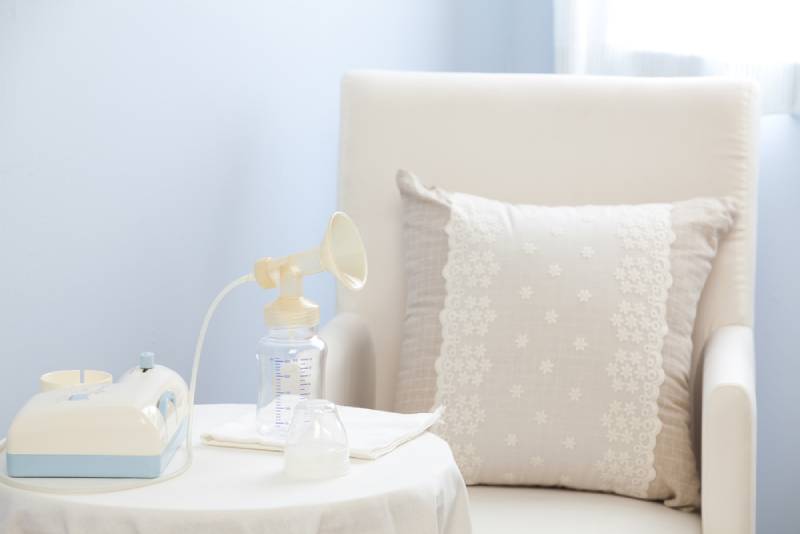Seeing a previously owned breast pump on sale for just a fraction of its original cost is tempting to a lot of moms who’d like to save some money on baby gear.
But should you buy a used breast pump?
The answer varies based on the kind of pump you’re considering! The FDA only recommends that multi-user pumps be used by more than one person, while single-user used breast pumps should not be handed down to another mom.
Still, there are many women who rely on previously-owned pumps for their breastfeeding needs, but it’s super important to know that this does come with a cross-contamination risk for your little munchkin.
Even if a brand new pump costs simply too much for your budget, you will be excited to learn that there are ways of getting one for free, either through health insurance or assistance programs.
So, read on to get all the info on used breast pumps and which ones are safe to use!
A Few Must-Know Things About A Used Breast Pump
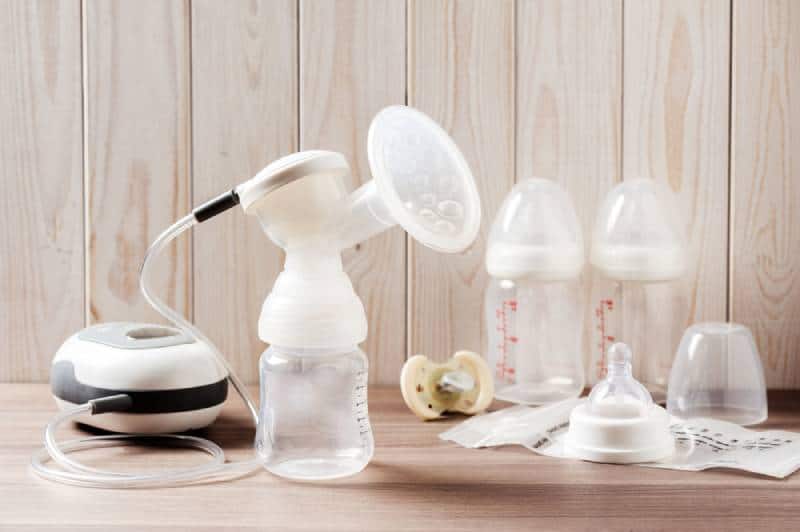
If you purchase a breast pump for personal use, whether it’s to improve your milk supply or create a freezer stash, it’s very likely that the model is only meant to be used by one mom during its entire lifespan.
However, there are exceptions to this rule in cases of highly specialized pumps.
To see whether you can donate, sell, or even buy a used breast pump, it’s important to know what kind of pump you’re dealing with, as there are different types, such as manual or electric.
Since you’re most likely interested in buying or selling an electric breast pump, it’s important to explain two terms that are very likely to come up when shopping for a pump:
- Closed-system breast pump (also known as hospital-grade);
- Open-system breast pump.
RELATED: Open Vs Closed System Breast Pumps: What’s The Difference?
In the first, closed-system type, the pump separates the milk flow and the collection kit from the motor of the pump, with the help of a device known as the backflow protector.
An open-system pump doesn’t have a protector of any sort, so it’s not as hygienic as the closed-system one.
On the other hand, the United States Food and Drug Administration (FDA) advises not to use a previously used manual or electric pump because it still carries a risk of cross-contamination, even if you do sanitize it.
So, even if you do have a closed-system pump, you should not give it to another mom if the pump was designed for only one user.
For example, if you decide to breastfeed your little one and buy a used pump, you can put them at the risk of the cytomegalovirus, which belongs to the herpes group of viruses.
Also, there is a risk of catching any other virus carried by the previous owner that has survived inside the pump.
A new breast pump, on the other hand, doesn’t come with such risks.
In addition, a hospital-grade pump is a term that’s not officially regulated by the FDA, meaning that it’s used as a marketing strategy by different companies when advertising their pumps.
As a result, there is no set of criteria that a pump must fulfill in order to be considered hospital-grade.
The only used breast pumps that are completely safe to use by more than one woman are multiple-user breast pumps.
Some brands that fall under this category are:
- Ameda Elite;
- Medela Symphony;
- Hygeia EnDeare;
- Spectra S3 Pro.
On the other hand, models such as Medela Pump in Style are for personal use only.
If you’re not 100 percent sure whether the used pump you’re interested in is safe to use by more than one woman, just ask or check on the pump manufacturer’s website whether the pump is single or multi-user.
The prices of new pumps are certainly high, but multi-user pumps are a special kind of expensive! This means that you will usually only find them at the hospital.
Some moms also decide to rent them for a short period of time, which is more budget-friendly.
If you purchase a used multi-user pump, you’re going to need a brand new accessory set that includes the following pump parts:
- breast shields;
- bottles;
- tubing.
Can I Donate A Used Breast Pump?
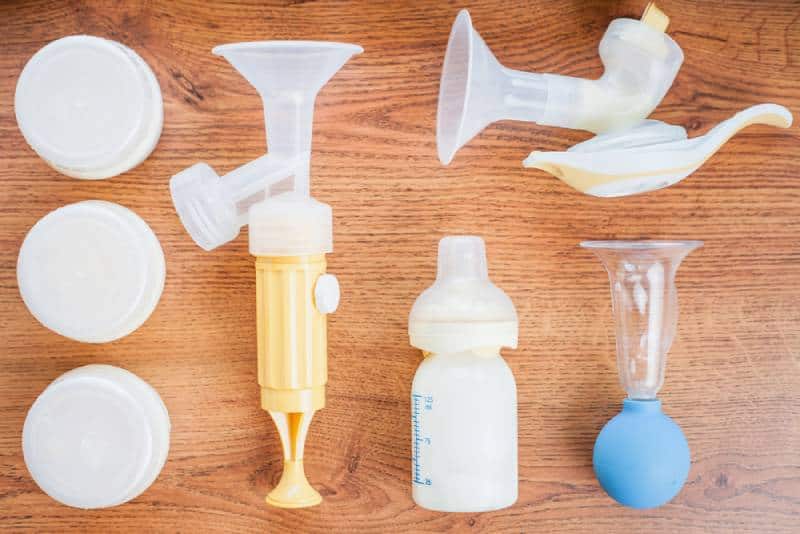
Before I go into the specifics of donating breast pumps, I would like to give kudos to you for being so caring and wanting to help other new moms on their breastfeeding journey!
Breast pumps, especially hospital-grade ones, aren’t affordable to every single mom out there.
So, giving them the opportunity to pump and feed their little one breast milk even when they aren’t able to be with their baby physically is a wonderful thing to do.
Unfortunately, it really isn’t recommended to donate a used breast pump, regardless of whether they are an open system or closed system, since bacteria can still get into the pump motor.
Because of the reasons I mentioned above, the FDA does not recommend using a second-hand breast pump.
The only used pump that is technically protected from potential contamination and can be used by more than one mother is a multiple-user breast pump.
With these models, breast milk never comes into contact with parts of the pump that are used by multiple moms.
If you happen to have one of these models at home, then many charities would be happy to take it as a donation or you can give it directly to another mom in need.
For the purposes of breast pumping though, most moms use single-user pumps that shouldn’t be shared because there is still a risk of contamination present.
Obviously, all of this means that you shouldn’t sell or give away your old pump if you would like to be mindful of another baby’s health.
So, what are the alternatives? Should you just throw your old pump in the trash?
Of course not! In this case, what you can do is recycle the breast pump.
These devices come with all sorts of electrical parts and even batteries, which shouldn’t end up in a landfill as they can pollute the environment.
The best way to recycle your device is to call the pump manufacturer and ask whether they have a recycling program.
One of the biggest breast pump brands, Medela, has a program called Medela Recycles where you can send them your old pump for recycling – but it’s only available for Medela breast pumps.
Keep in mind that the only parts you should send back are the power cord and the motor unit of the breast pump.
Alternatively, you can look up a recycling center in your area and send your pump there.
Even though you can’t help disadvantaged moms with a free electric breast pump, for example, there are still many ways for you to give back to those in need.
You can donate baby clothing, for example, old strollers, toys – any piece of baby gear that can be safely used by another baby!
You can also look up different nonprofit organizations to make a donation to support new parents.
One of the best nonprofits that supports parents nationwide is the Good+ Foundation, which not only provides them with different services but also useful items such as diapers or baby wipes that many can’t afford.
How To Get A Free Breast Pump
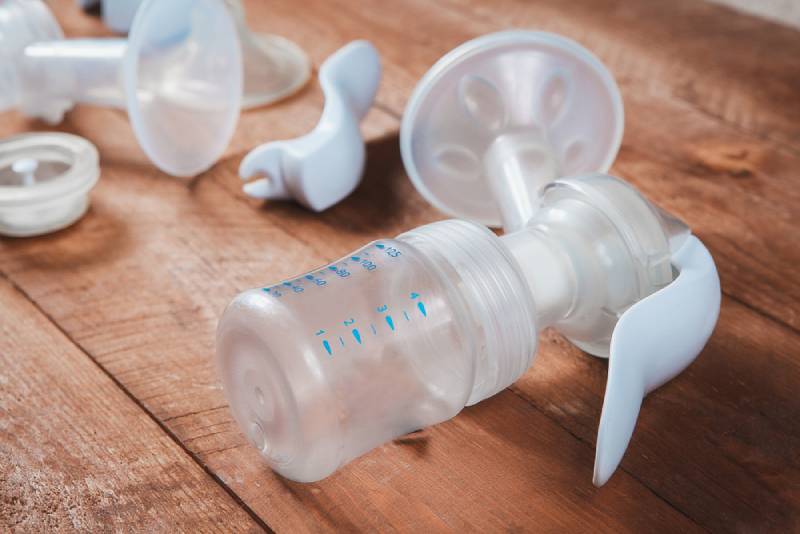
Without a doubt, breastfeeding can become very expensive once you add a pump to the mix!
And there’s no hiding the fact that there are so many moms who simply can’t afford to purchase a new one, especially when you consider the sometimes astronomical costs of preparing for a baby’s arrival.
One of your first options is to put a pump on your baby registry or ask close family and friends to chip in and help cover some or all of the costs of the device.
Alternatively, if you have health insurance, you can give them a call and see whether you are eligible for a free pump.
Under the Affordable Care Act, insurance providers should cover the cost of a pump, so make sure to take advantage of this opportunity!
You might also be eligible to have your visits to a lactation consultant paid for through insurance as well – don’t be shy to ask any and all questions that cross your mind.
Even if you don’t have insurance, there are still programs available to help you cover the costs, such as Woman, Infant, Child (WIC), and it’s worth checking whether you are eligible for assistance.
To Sum Up
When seeing the low prices of used breast pumps, it’s so easy to get carried away and throw caution to the wind!
The truth is that there is a significant percentage of moms who use a previously owned pump.
Even though many of them don’t experience any complications as a result, I still believe it’s best to follow the advice of the FDA and avoid buying used breast pumps if possible.
Unless they are specifically designed for multiple users, bacteria can still be present in some of the pump parts that could expose your little one to infections.
And don’t forget to double-check whether you are eligible for a free pump through your insurance, as it would be a huge shame to miss out on a brand new pump that would come at no cost to you!
References:
“Buying and Renting a Breast Pump” by the U.S. Food and Drug Administration, published on the U.S. Food and Drug Administration website on January 15, 2018.
Like this post? Please share or pin it for later. You can also stay in the loop and follow us on Facebook, Instagram and Pinterest.
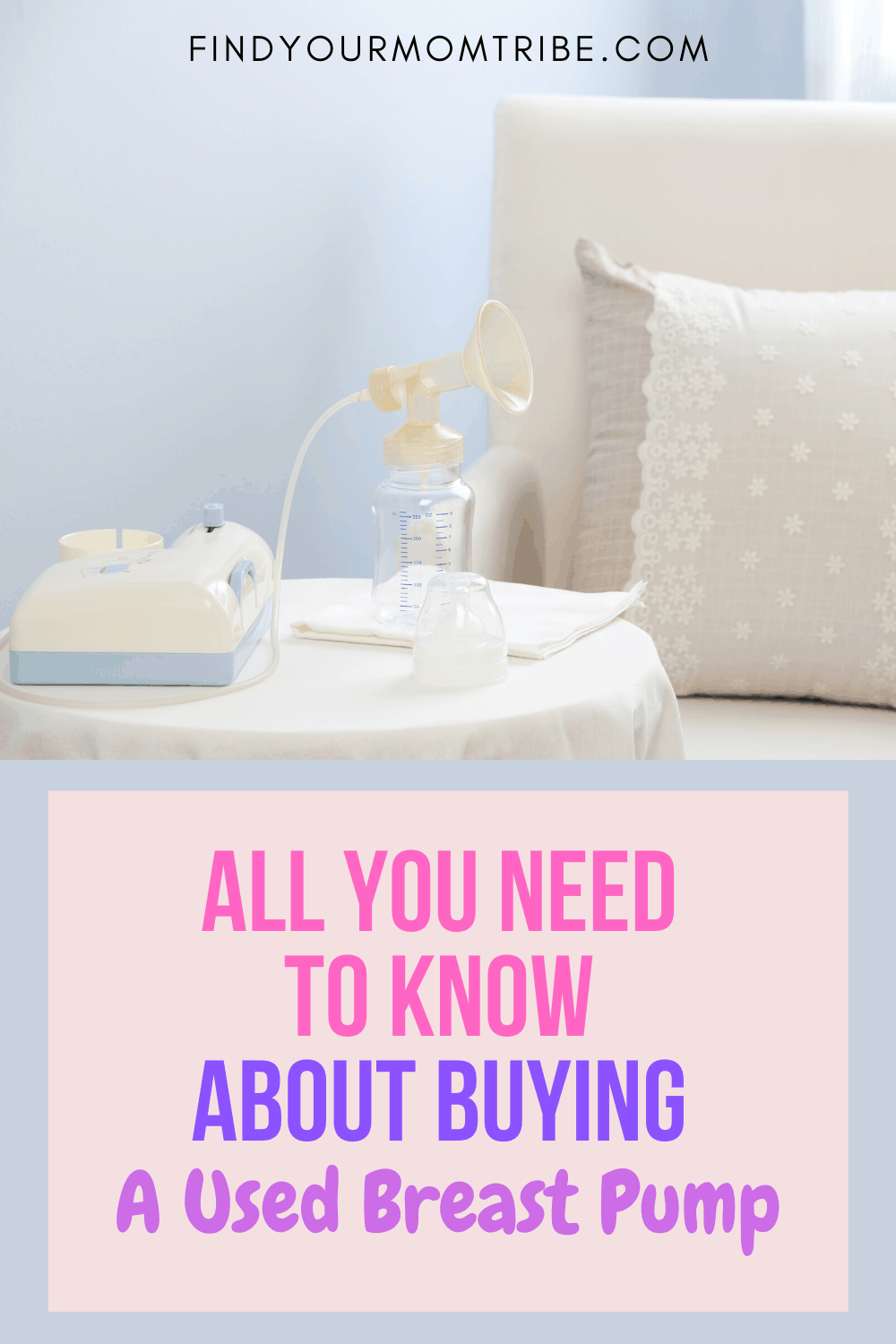
This post contains affiliate links. Please see our full disclosure or more info.

